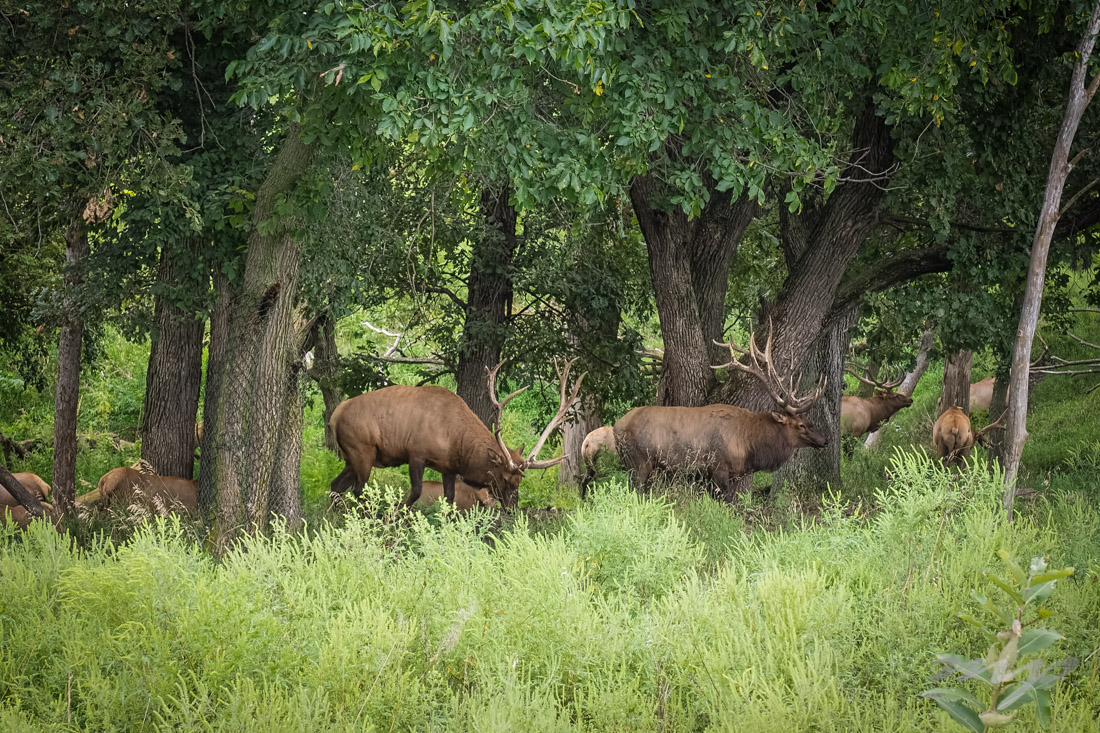
On a recent fall like day we took a ride through the nearby Nebraska’s Lee G Simmons Conservation Park and Wildlife Safari.
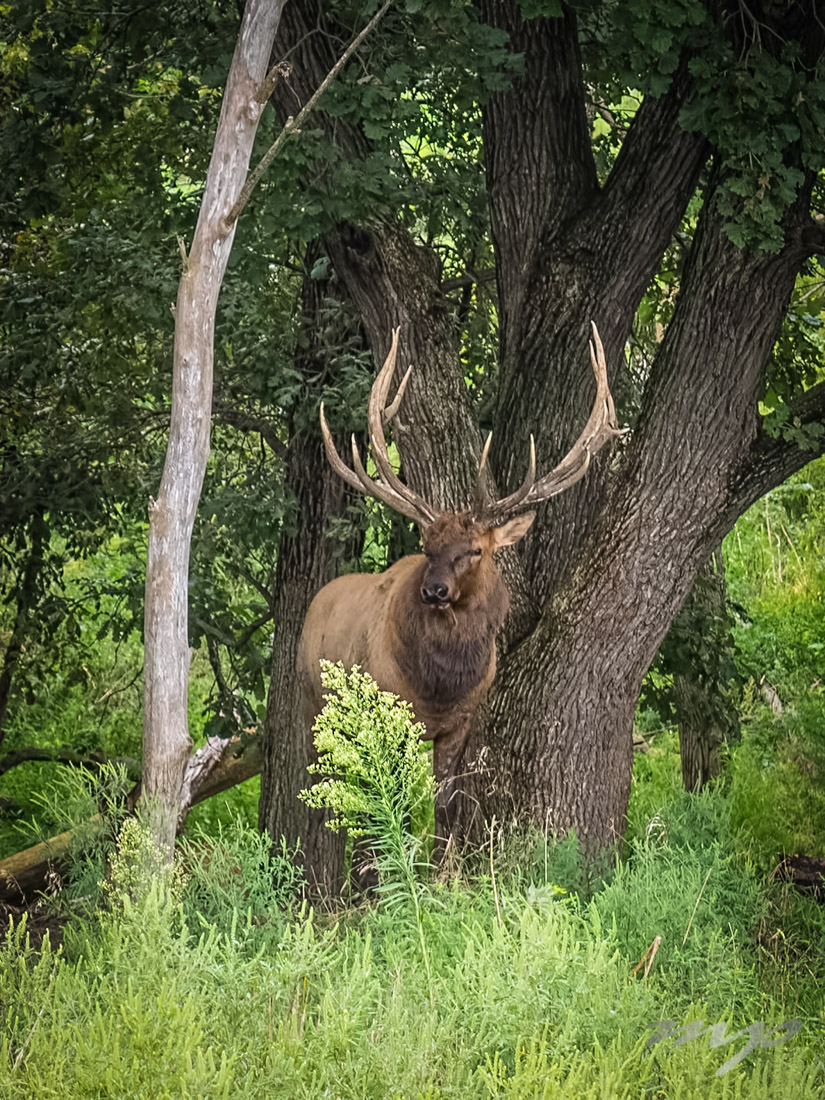
As our big RAM 3500 dually truck, with mirrors extended to their widest towing position, pulled to the park admission drive-up window the women behind the window did a hesitant sweep of the truck with her eyes and then indicating the mirrors asked, “My that’s a wide one, those fold in don’t they?” I assured her they would fold in somewhat if there was a need. However, it was from my glancing in the those same mirrors as we were pulling away that I saw her and a friend looking out the window with a clearly implied conclusion on their faces, “That’s so wide, I hope they make it.”
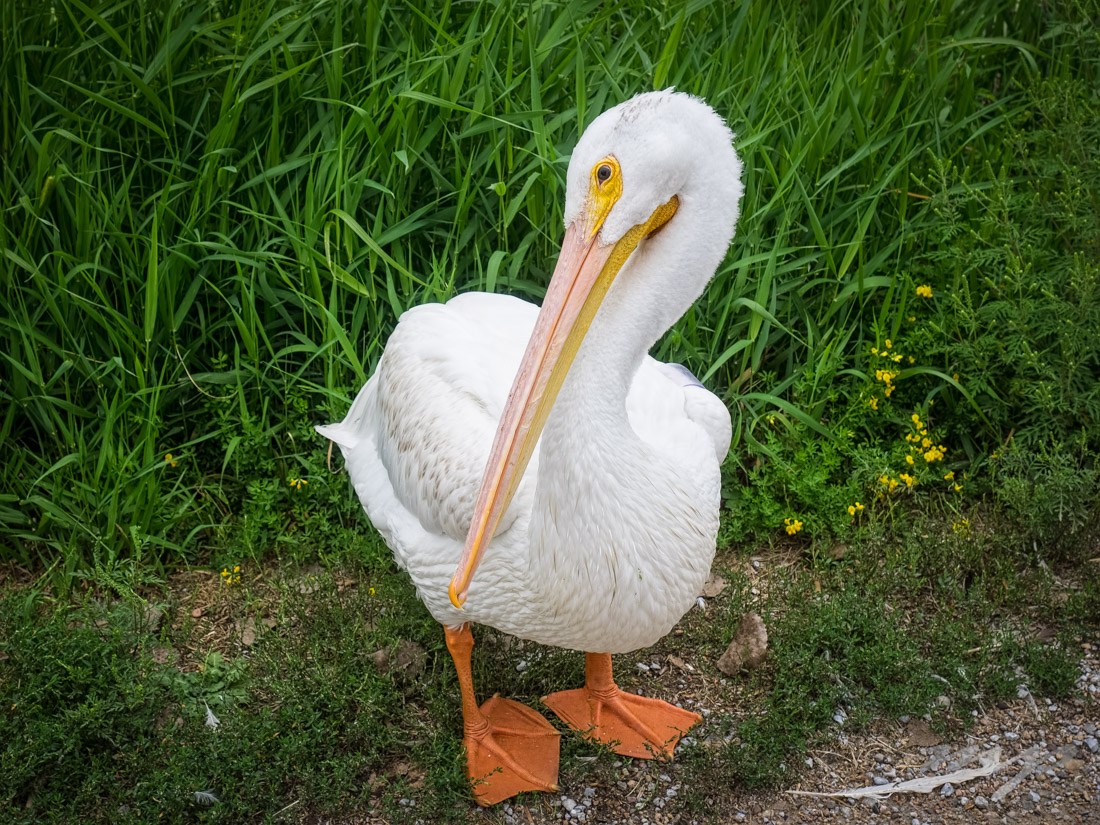
Rest assured we did make it and there was only one spot where I felt it was a little tight but still the mirrors remained out. Even in the towing position they are only a few inches wider then the dually wheels and fenders that follow.

We enjoy the slow and scenic ride even though the road was very rough in places. The animals of the conservation park appeared to be well cared for with natural habitat to roam. Best of all no feeding is allowed and therefore most have retained a part of their “wildness” remaining at a distance from transiting vehicles. No sad begging animals here.
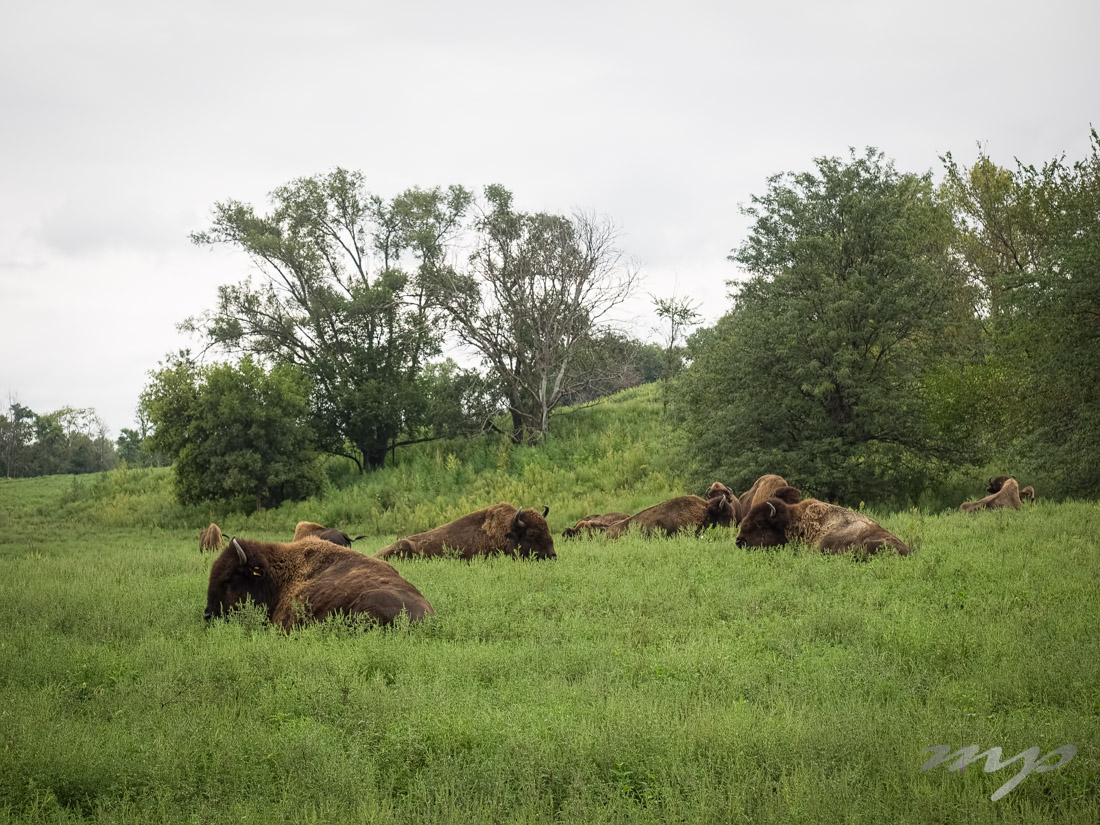
Maggie was allowed to go along and for most of the visit she moved from one side of the truck to the other, often hanging her head out the window to get a better look at these strange (to her) creatures. However, she never barked once.

There were also wolves and Bald Eagles at the park which we didn’t get to observe.
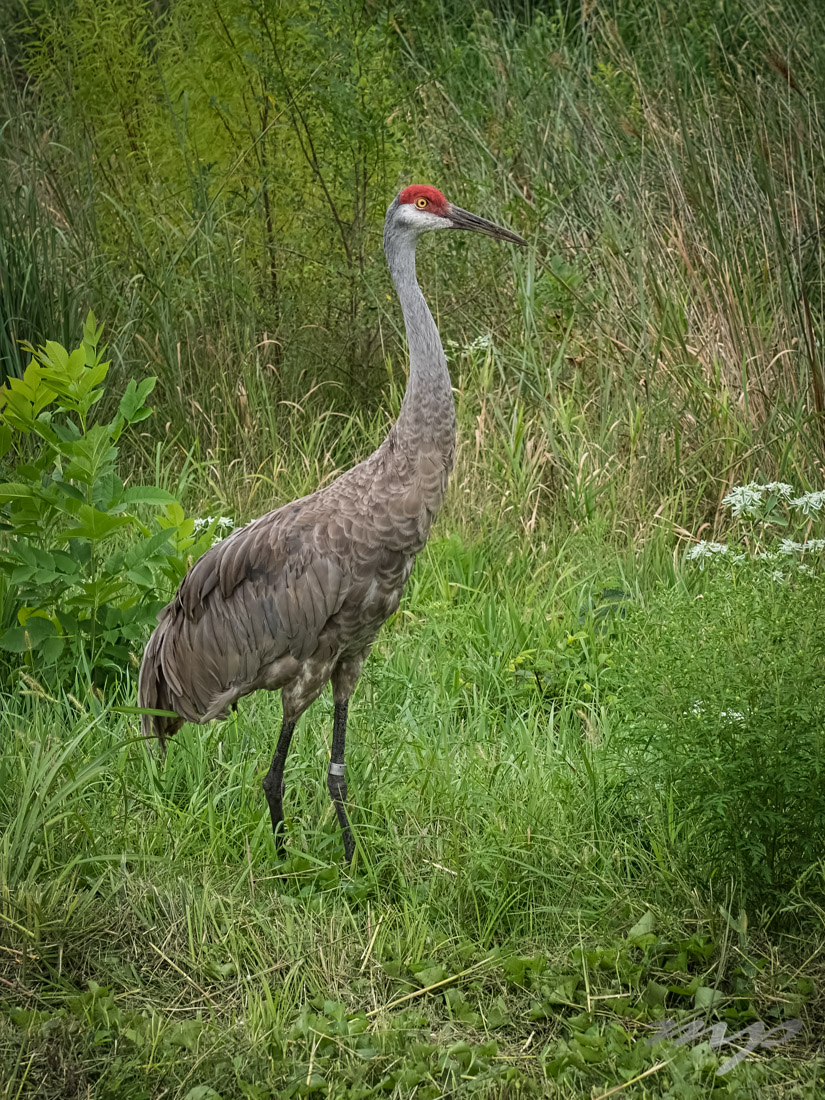

I’m impressed at how green every thing is, Brooks. I noticed the elk have already lost their velvet while they are still in velvet here. I’m a fan of places that still try and support an area for wildlife.
Sounds like the truck’s not designed for parallel parking. :-)
It’s very green here, Monte. We notice the change as we worked our way eastward to the Omaha area. As to the truck, you’ve got to be thinking ahead a couple of moves so as not to get into someplace you can hardly get out of — it’s become the new normal now so I hardly think about it.
Like Monte, I’m a big fan of places that support wildlife, especially in a “natural habitat” environment. It’s probably why I’m so fond of places like Yellowstone, Zion, and Bosque del Apache (a New Mexico wildlife sanctuary famous for Sandhill Cranes and Snow Geese). To see Bison in fairly large numbers is just fascinating. As is seeing large Elk populations. Don’t see much of that here in NY!
Paul, I always love seeing wildlife and think it’s great there are places such as this that can care for those who are displaced or injured and can’t return to the wild. The larger mammals, American Bison and ElK, are among my favorites.
What a great place, and some beautiful shots Earl. I’ll bet Maggie had a lot of fun with all the different smells of these new dogs.
Thanks, Mark. Yeah, Maggie had a great time watching all the “strange dogs.” She slept all the way back to the RV Park after the safari drive. Of course I’m pretty sure she doesn’t know she’s really a dog. :-)